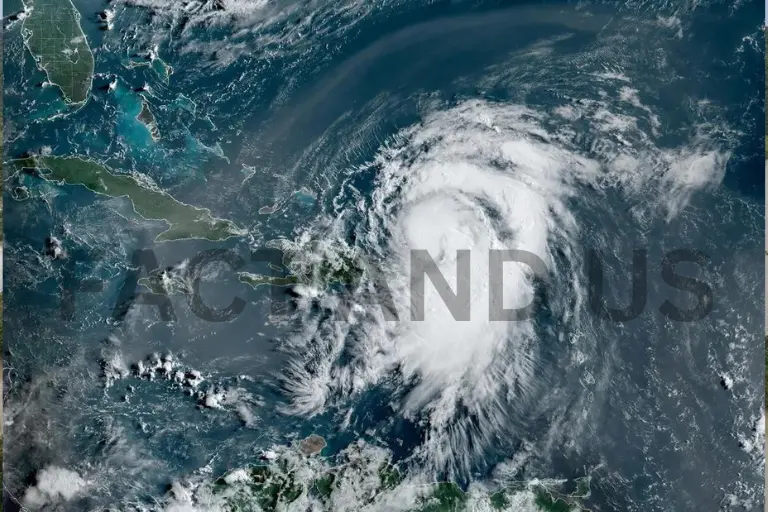More than half of all homes and businesses in Puerto Rico were left without power in the wake of Storm Ernesto, the main power supplier for the Caribbean island has said. LUMA Energy said 998,000 customers were without electricity by 03:05 EDT (07:05 GMT), the US partner of News. Ernesto, which intensified into a category 1 hurricane on Wednesday, continues to intensify with gusts of up to 85mph (140km/h) moving further north towards Bermuda, where it is expected to make landfall on Friday.

Forecasters said it is likely to strengthen into a major hurricane in the next 48 hours. The storm passed close to Puerto Rico overnight, bringing with it up to 10in (25cm) of rain in some places, the US National Hurricane Centre (NHC) said. Juan Saca, president and chief executive of LUMA, said more than 1,500 employees were working in the field to “re-establish service” and flip the electricity back on.
“We need to assess what must be done so that it can be resolved,” he said of Reuters news agency.
The island’s power grid was shut down previously by hurricanes. In 2022, when Hurricane Fiona pounded the island, approximately 80% of homes and businesses went dark for nearly a month. Ernesto is the fifth named Atlantic storm of this season.

Hurricane Beryl became the earliest Category 5 storm on record in the Atlantic when it moved through the Caribbean and the Texas Gulf Coast last month, killing dozens and leaving millions without electricity. Hurricane Ernesto struck Puerto Rico on Wednesday, knocking out power for nearly half of all homes and businesses on the Caribbean island as it threatened to strengthen into a major hurricane en route to Bermuda.
More than 725,000 homes and businesses in the US territory had lost power out of some 1.5 million users, according to LUMA Energy, the island’s main energy supplier.
The storm was about 675 miles (1,085 kilometers) south-southwest of Bermuda as of early Thursday, moving northwest at 16 mph (26 kph) and had maximum sustained winds of 85 mph (140 kph).
Contents
Warning issued for beaches on US East Coast
“Hurricane conditions are possible on Bermuda on Saturday,” the National Hurricane Center posted on social media. “The risk of life-threatening surf and rip currents is expected to increase along the US East Coast beaches this weekend.”


On the threat to the US East Coast, Robbie Berg, warning coordination meteorologist with the National Hurricane Center, said: “Anybody who goes to the beach, even if the weather is beautiful and nice, it could be dangerous, with those rip currents.” Meanwhile, tropical storm warnings were discontinued for Puerto Rico and its outlying islands of Culebra and Vieques and for the US and British Virgin Islands. “I know it was a long night listening to that wind howl,” US Virgin Islands Governor Albert Bryan Jr. said in comments to reporters.
Bermuda braces itself
Ernesto was a Category 1 hurricane, which slowly grew in strength, but might be classified as a Category 3 hurricane on Friday. “Residents must prepare now before conditions worsen,” Bermuda’s National Security Minister Michael Weeks said. “Now is not the time for complacency.
Storm Ernesto Devastation
Hurricane Ernesto forced its way ashore with aggressive winds and heavy rainfall as it devastated the island of Puerto Rico. The electrical supply infrastructure of the island has largely been hit by this kind of impact, causing near total blackout in most regions of Puerto Rico. Essential services, such as hospitals, emergency units, and several daily routines, are therefore disrupted.

The power outages have left many homes and businesses in the dark, complicating recovery efforts and making it difficult for residents to access basic necessities. The loss of power also poses a significant challenge for those with medical conditions that require electricity, adding to the urgency of the situation.
Emergency Response and Recovery Efforts
Local and federal agencies have launched a coordinated effort to restore power and provide aid in response to the crisis. Utility crews are working tirelessly to repair damaged lines and restore electricity, while emergency services are focused on assisting affected communities. Shelters have been set up to offer refuge to those displaced by the storm, and relief organizations are distributing food, water, and medical supplies.

The government has also mobilized resources to address immediate needs and support the ongoing recovery process. Volunteers and community groups are playing a crucial role in providing assistance and ensuring that help reaches those who need it most.
Stay connected with Fact and US for more such news.
